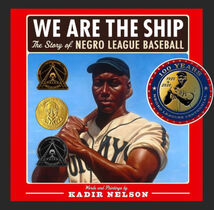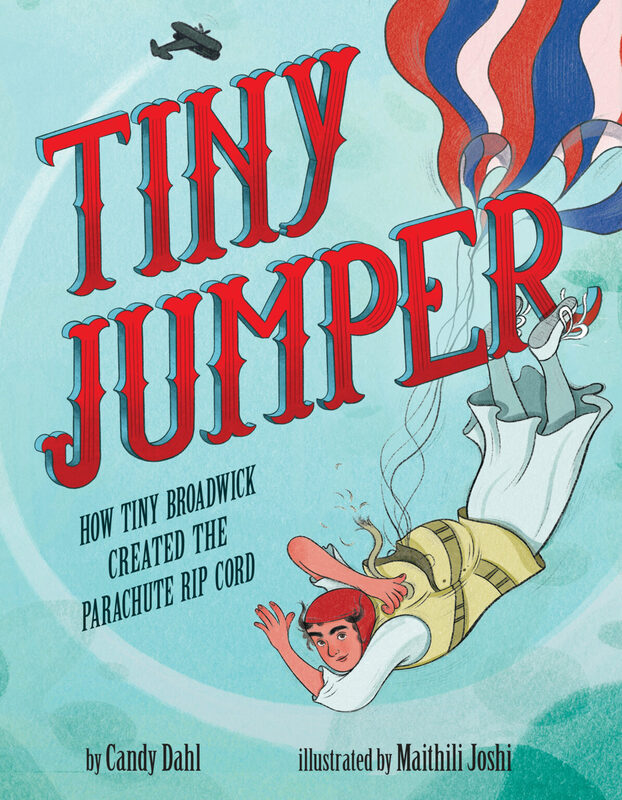By The Biography Clearinghouse As we come to the end of another calendar year, we reflect upon how much the world can change in just a few short months. Political turmoil, violence, and war threaten the lives of millions. Climate scientists tell us that 2023 was the hottest year on record. Devastating fires and floods ravaged cities, towns, and forests alike. These catastrophes may feel unique to our life experience, so it helps to remember that people before us have faced hardships too. Again, we turn to biographies to learn from the people among us and those who came before us. What lessons in leadership can we find? How do artists, faith leaders, scientists, activists, educators, and others work towards goals? Handle setbacks? Cope with prejudice? Persevere while facing devastation? Work collaboratively to create change? In this year-end blog entry, we share a few picture book biographies from 2022 and 2023 that were inspiring to us, as well as preview a 2024 biography. With best wishes for peace in the New Year, The Biography Clearinghouse Team
Winter Hiatus Announcement
By Patricia E. Bandré Sport has the power to change the world. It has the power to inspire. It has the power to unite people in a way that little else does.”  For approximately four weeks this spring, fourth-grade students at Oakdale Elementary in Salina, Kansas read and discussed, We are the Ship: The Story of Negro League Baseball (Nelson, 2008) as part of a language arts unit. Students found the book highly engaging and the art extraordinary. Numerous discussions occurred as students read, wondered, and conducted research in order to learn more about Negro League players and team owners. Ideas in the book sparked a variety of emotions and prompted numerous conversations about how people treated one another then, how they treat one another today, and what it means to break barriers. When the unit concluded, teachers Joy Fox-Jensen and Mary Plott desired to capitalize on students’ enthusiasm for the book and their interest in sports. They wanted to introduce students to other African American athletes who had broken barriers and pursued their dreams. In my role as the district reading instructional specialist, I worked with the teachers to plan and conduct a six-day mini-unit. We chose four books for our study: Above the Rim: How Elgin Baylor Changed Basketball (Bryant, 2020), Playing to Win: The Story of Althea Gibson (Deans, 2007), A Nation’s Hope: The Story of Boxing Legend Joe Louis (de la Peña, 2011), and Wilma Unlimited: How Wilma Rudolph Became the World’s Fastest Woman (Krull, 1996). We intentionally chose to introduce African American men and women who excelled in sports other than baseball and faced barriers in addition to those posed by race; poverty, illness, and physical disabilities provided further challenges for the athletes we selected. We also wanted students to experience a variety of writing styles and different types of illustrations. Finally, we wished to select athletes to whom the students could connect. We wanted them to see how these barrier-breaking athletes valued determination and perseverance, realized the importance of compassion, and understood how seemingly simple actions spoke louder than words. Our goal was to help the fourth graders begin to see how they could become barrier-breakers, too.  Because students demonstrated such a high level of interest in Kadir Nelson’s paintings when reading We are the Ship, we elected to begin the study with a short exploration of book design. I used information from the article Picturebooks as Aesthetic Objects (Sipe, 2001) to help frame our conversations. We are the Ship (Nelson, 2008), along with two classic picturebooks, Where the Wild Things Are (Sendak, 1963) and The Little House (Burton, 1942), served as models. After reading the two picturebooks aloud, we took a focused look at all three books. As part of our discussion, I prompted students to consider how the size and shape of a book might add to its meaning. Students contemplated the image on the dust jacket and cover of each book – were these images the same or different? Why? They looked closely at the endpapers and wondered about the significance of the colors and the images, if there were any. We considered the color palette each artist used and discussed how those colors suited the text and made them feel. Students noticed the different points of view Nelson employed in We are the Ship; individual players appeared to be larger than life, but in the team paintings, each member seemed equally significant. Students greatly admired Nelson’s full-bleed art, but also found the way Sendak (1963) placed frames around his illustrations in Where the Wild Things Are to be intriguing. Students were quick to notice how the size of the frames changed, disappeared, and reappeared as we watched the main character, Max, journey in and out of his imaginary world. Ultimately, this exploration created a heightened sense of awareness and resulted in careful observations, thoughtful questions, and insightful responses about the other books we read.  Over the next four sessions, students interacted with a new book each day. Each initial reading was conducted as a read-aloud or a combination of listening and partner reading. I purposely did not stop to talk about the book during its first reading. Rather, I wanted students to take in the language and art on their own in order to develop a first draft understanding (Barnhouse and Vinton, 2012). Following this process allowed them to come to their own conclusions about the athletes and the barriers faced without the influence of their peers. Instead of talking, students took two sticky notes and recorded one thing they noticed about the book and one fact they learned during the first read. Students shared their “Notice and Learn” notes with a shoulder partner and posted them for others to read. Next, we dove back into each book and revisited specific passages in order to explore the way the authors used language to provide clues as to the personality of each athlete. An organizer modeled after the Reading with Attitude protocol (Buehl, 2014) assisted to facilitate our conversations. As students reread certain passages from each book, they contemplated the athlete’s and author’s emotions and shared how the text made them feel as the reader. Discussions ensued about the language in the text and how it prompted them to infer the presence of these emotions. Additionally, students made specific references to the art in each book and how it affected their response. As students met each new athlete, the comments they shared made it clear that they realized the athletes were different from one another, but connected by common threads
References
Barnhouse, D., & Vinton, V. (2012). What readers really do: Teaching the process of meaning making. Portsmouth, NH: Heinemann.
Buehl, D. (2014). Classroom strategies for interactive learning, (4th ed.). International Reading Association: Newark, DE. Sipe, L. R. (2001). Picturebooks as aesthetic objects. Literacy Teaching and Learning, 6(1), 23-42. Children’s Books
Bryant, J. (2020). Above the rim: How Elgin Baylor changed basketball. Illus. by F. Morrison. Abrams Books for Young Readers: New York, NY. Burton, V. L. (1942). The little house. Boston, MA: Houghton Mifflin Company. Deans, K. (2007). Playing to win: The story of Althea Gibson. Illus. by E. Brown. Holiday House: New York, NY. de la Peña, M. (2011). A nation’s hope: The story of boxing legend Joe Louis. Illus. by K. Nelson. Dial Books for Young Readers: New York, NY. Krull, K. (1996). Wilma unlimited: How Wilma Rudolph became the world’s fastest woman. Illus. by D. Diaz. Houghton Mifflin Harcourt: Boston, MA. Sendak, M. (1963). Where the wild things are. HarperCollins Publishers: New York, NY. Patricia E. Bandré, Ph.D., is the reading instructional specialist for USD 305 Public Schools, Salina, KS and serves as treasurer for CLA. Joy Fox-Jensen and Mary Plott are fourth grade teachers at Oakdale Elementary School, USD 305 Public Schools, Salina, KS. We wish to thank the Salina Education Foundation for funding this project. |
Authors:
|
CLA
About CLA
|
Journal of Children's Literature
Write for JCL
|
ResourcesCLA-sponsored NCTE Position Statements
|
Members-Only Content
CLA Video Library
|
© COPYRIGHT 2018.
ALL RIGHTS RESERVED |














 RSS Feed
RSS Feed